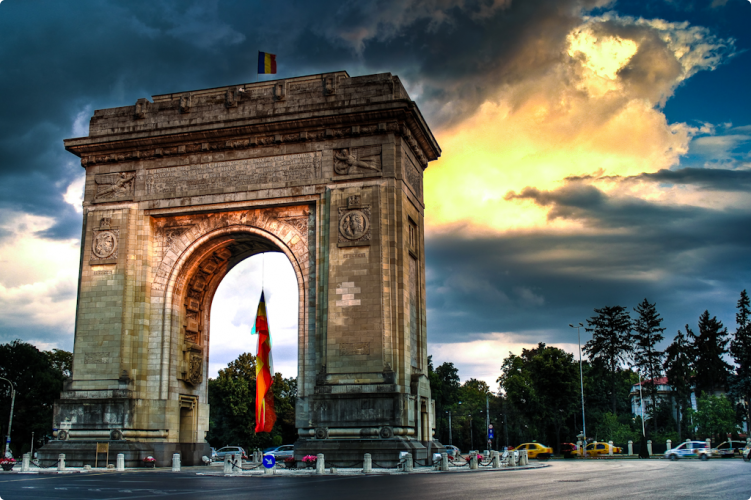Travel to Bucharest (Romanian: Bucuresti) takes us along the banks of the Dambovita River, into the southeast of Romania. Bucharest apartment rentals are quite reasonably priced in the city as Romania remains extremely cheap for an EU country. Nicknamed the “Paris of the East,” Bucharest has many, many museums and attractions and a rich history that’s still alive and thriving in the Old City district of Lipscani. So come enjoy old city Bucharest accommodation at its best and explore the history of Romania's capital city, a rich history indeed.
Dracula and the Founding of Bucharest
Bucharest gets its name from the famous Vlad Tepesi, “Vlad the Impaler,” (also known as Dracula), who coined the name in 1459. His brother (Radu Cel Frumos) lived here after Dracula died in 1465, while he was the ruler of the Valahia (Tara Romaneasca). As you'd imagine the mythology of the great vampire prince has often been entwined with Bucharest's history and travel here often involves delving into the beautiful myths of the city's beginnings. Renting one of our apartments in Bucharest as a home base is the first step in planning your journey.
Birth of the Modern in the “Paris of East”
In the second half of the 19th century, the population of the city increased dramatically as peasants and merchants began to travel to Bucharest in waves. The extravagant architecture and cosmopolitan high culture of this period won Bucharest the nickname of 'Paris of the East.' The city’s connection to Paris was later solidified with the Arcul de Triumf (similar to the Arc de Triomphe in Paris) which was built in 1936 on the site of Bucharest original Archway, built in 1878 to celebrate Romania’s independence.
WW1 and WW2
On December 6, 1916 the city was occupied by the German forces, the capital being transplanted to Iasi, but Bucharest was liberated in November 1918, becoming the capital of the new United Kingdom of Romania. Bucharest suffered extensive damage to much of its architecture during WWII due to the English and American bombardments. On November 8, 1945, known as the King's day, Communist party supporters suppressed pro-monarchist rallies and Romania entered its Communist period.
Bucharest's Communist Era
During Nicolae Ceausescu's leadership, most of the historical part of the city, including old churches, was destroyed. Much of the old architecture was replaced with the grand socialist buildings of the Centru Civic, notably the Palace of the Parliament, the world's second largest building and a must stop on an excursion through the city.
Mass protests began in Timisoara in December 1989 and continued into Bucharest, leading to the overthrow of Ceausescu's communist regime. Communist rule interrupted Bucharest's cosmopolitan days, yet since the fall, the restoration of the city’s legacy has been quick and rigorous. Since 2000—thanks to Romania's economic boom—the city has rapidly modernized and many historical areas have been restored to their former beauty including the gorgeous 19th century facades that we're now famous for.
The possibility of affordable travel to Bucharest as well as Romania's entrance into the EU have greatly impacted the modern rise of the city. Known for its wide, tree-lined boulevards, stunning Belle Époque buildings and a reputation for the high life, the city welcomes tourists in droves. One of Lux Apartments’ stunning downtown apartments is an excellent home base as you explore the deep history of this beautiful city.
